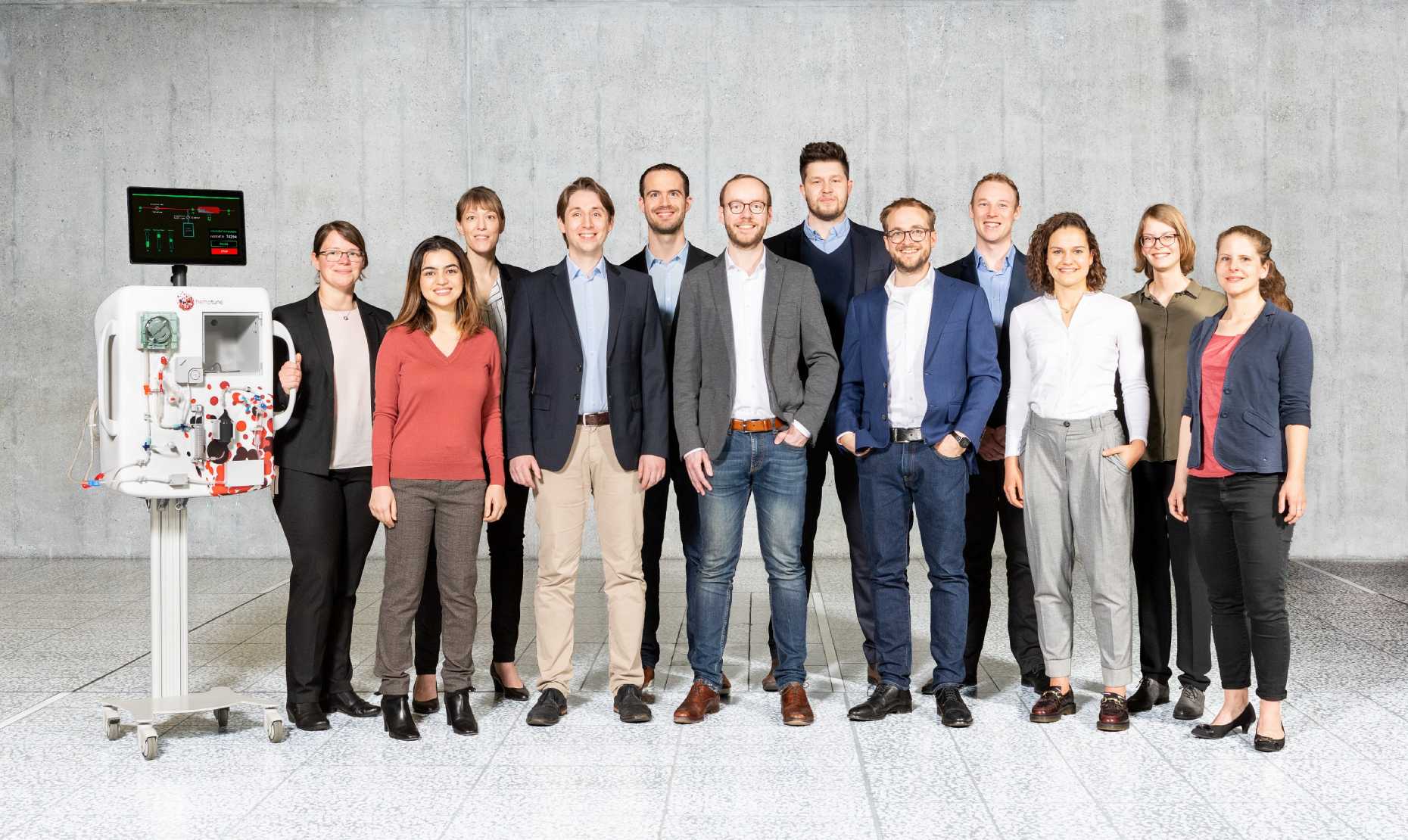Magnetic blood purification to cure sepsis
Affecting almost 50 million people every year and causing high costs as well as too many deaths, sepsis – also known as “blood poisoning” – is one of the greatest medical challenges in the world. ETH spin-off hemotune AG has invented an award-winning technology to overcome this problem.
Hemotune AG founder, Lukas Langenegger, recently shared some insights about his new technology.
What is the big challenge in curing sepsis, and why is it so important to do so?
Sepsis is a life-threatening misguided immune response to a bacterial or viral infection. The infection itself is not necessarily deadly but may lead to sepsis, which can cause severe complications including organ collapse. Given its prevalence, the World Health Organization (WHO) declared it a health priority in 2017. As there is no cure for it today, sepsis patients are kept in intensive care units for a very long time. On top of being connected to 20% of all deaths globally, sepsis is also the single-most expensive condition treated in hospitals, with costs rising every year.
Your invention has won the Swiss Technology Award 2020. How does the technology work?
Many diseases such as intoxications, infections, or autoimmune diseases are caused by the circulation of certain molecules in the blood stream. The most efficient cure would be to remove these molecules. Hemotune’s ground breaking blood purification technology is doing just that.
The technology is based on tiny magnetic beads (“HemoBeads”) which are 300 times smaller than a red blood cell. They are equipped with binding sites on the surface and capture only desired targets without affecting other essential blood components. The “HemoBeads” are mixed with the patient’s blood in a dialysis-like machine, where they capture the toxins and are then removed with a magnetic filter.

Applying a mixture of “HemoBeads” with different binders allows the parallel removal of different harmful compounds. This is especially interesting for complex diseases such as sepsis, where multiple compounds are driving disease progression.
If we compare this technology to drugs, we see various benefits. Firstly, no drugs need to be given to the patient, as the blood purification takes place outside the body. Secondly, introducing a similar multi-target drug treatment to the market would be extremely complex and costly because several drugs would have to be combined. Launching a new medical device is much more efficient as it takes less time to market and is cheaper than drugs.
With regard to sepsis, we have collaborated with world leading experts to design a multi-target precision treatment to restore the immune balance and improve the patient outcomes. It is our goal not only to provide better patient care, but also to make the treatments broadly available at reasonable cost.

Is the technology already in use? When will patients be able to benefit from your solution?
We are currently finishing the preclinical tests. Moreover, we recently have started a scientific collaboration with the Intensive Care Department of the University of Bern to prepare a clinical study. We plan to start the clinical evaluation and treat the first patients in Switzerland and Europe by the end of 2022.
What are you plans for the future?
We are currently part of “Wyss Zurich”, the joint accelerator of the University of Zurich and ETH Zurich where we receive a lot of support. Last summer we closed our Series A financing round and raised CHF 5.1 million to further develop our technology. Despite the global pandemic, hemotune has managed to build a very strong consortium led by OCCIDENT and with participation of the Korean medical device company Green Cross Medical Science Corp. (GCMS) and Zürcher Kantonalbank. As our team has grown a lot, we recently moved to Biotechnopark in Schlieren, where we have our own labs and offices.
Apart from completing the design work, we are now looking for additional investors to finance the clinical studies for sepsis. This will be a great step towards the implementation of the technology in clinics. As our technology can be adapted to other indications, we also see great potential to use it to treat other diseases in the future.

Contact/Links:
external pageHemotunecall_made
Do you want to get more "News for Industry" stories?
external pageSubscribe to our newslettercall_made
external pageFollow us on LinkedIncall_made
Are you looking for research partners at ETH Zurich?
Contact ETH Industry Relations
ETH spin-offs: facts and figures
Since 1996, 471 spin-offs have been founded at ETH Zurich. ETH transfer, the technology transfer office at ETH Zurich, supports recognized ETH spin-offs in the founding process and in their first years of operation.
Wyss Zurich:
external pageWyss Zurichcall_made is a joint accelerator of the University of Zurich and ETH Zurich (Swiss Federal Institute of Technology Zurich), which was made possible by a generous donation from the Swiss entrepreneur and philanthropist Dr. h.c. mult. Hansjörg Wyss. It was established to foster translational research focused on developing treatment protocols and clinical therapies, as well as novel technologies and intelligent systems, in the emerging fields of Regenerative Medicine and Robotics, and hybrid technologies thereof.
